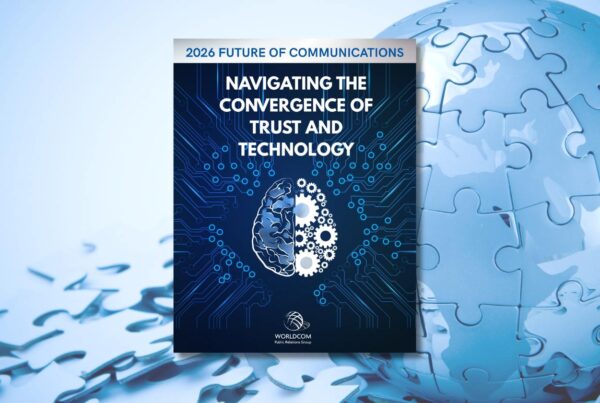By Dan Ahern
For companies in crisis, the line between a triumph and a disaster is often paper-thin.
By demonstrating transparency and reliability, a well-managed crisis response can sometimes work to bolster a brand’s reputation. Conversely, a mishandled situation can lead to a long-lasting stain on a brand’s image.
From environmental disasters to customer mistreatment, here are some of the most significant PR crises of the 21st century, which we’ve graded on the efficiency and effectiveness of their responses.
Procter & Gamble – The Tide Pod Challenge (2018)
The News: As inexplicable as it may seem, teenagers started ingesting Tide Pods as part of a viral challenge. This bizarre trend caught everyone off guard because no one had “a bunch of teens are going to start ingesting Tide Pods” on their 2018 BINGO cards.
The Response: Procter & Gamble (P&G), the parent company of Tide, was thrown into an immediate PR crisis that no one could have predicted. They executed a multipronged crisis management response and enlisted NFL star Rob Gronkowski to deliver a clear message: “Use Tide Pods for washing, not eating.” They posted just a few tweets about the challenge, focusing instead on collaborating with social media platforms to remove harmful content and spreading awareness via earned media.
The Fallout: Procter & Gamble took swift action to mitigate the crisis, and the general public now reflects on the challenge with minimal criticism toward the Tide brand itself. The internet is now filled with memes, photos, and GIFs that warn about the perils of the Tide Pod Challenge. The only point of criticism of Tide’s response is that despite the hysteria, only 86 teens actually ate the pods. Thus, P&G’s response can’t be characterized as perfect.
Why It Matters: The Tide Pod Challenge underscored a new type of PR crisis—one born from viral internet culture that can spiral out of control rapidly. It highlighted the need for brands to be prepared for the unthinkable and to have flexible crisis management strategies that address not only the direct implications of a product misuse but also the broader social media dynamics that can perpetuate such issues.
Our Grade: B+
BP – Deepwater Horizon Oil Spill (2010)
The News: In 2010, the BP-operated Deepwater Horizon oil rig exploded, causing a massive marine oil spill.
The Response: BP was widely criticized for its slow response and attempts to downplay the disaster. The company’s communication was seen as detached and bureaucratic, lacking the empathy expected in such a catastrophic event.
The Fallout: BP faced over $20 billion in fines, extensive environmental damage, and a tarnished public reputation that persists today. The company’s image became synonymous with environmental disaster, significantly impacting its market position and leading to years of litigation and regulatory scrutiny. When you think “BP,” chances are that you think “oil spill.”
Why It Matters: This crisis underlined the consequences of inadequate disaster preparedness and response in environmentally sensitive operations. It also sparked global debates on oil extraction policies and the need for sustainable energy practices, shifting industry standards and public expectations.
Our Grade: F
United Airlines – The Passenger Removal Incident (2017)
The News: A video that showed a passenger being forcibly removed from an overbooked United Airlines flight went viral.
The Response: United’s CEO was criticized for inconsistencies in his responses, issuing a public apology while simultaneously praising employees for following “established procedures” in a letter that was quickly leaked nationwide.
The Fallout: The incident led to severe backlash and lasting damage to the brand’s image, affecting the company’s stock price and leading to policy changes across the industry regarding overbooking practices.
Why It Matters: This disaster highlights the importance of consistent communication to all stakeholder groups, as the United Airlines CEO’s inconsistencies in communicating with his employees and the public fueled the ensuing outcry. It also highlights the importance of proper language in stakeholder communications, down to every word. The CEO was criticized for using the word “reaccommodate” to describe customers removed from the flights and words like “disruptive and belligerent” in reference to the customer who was injured in the video.
Our Grade: D
Starbucks – Philadelphia Store Incident (2018)
The News: Starbucks staff at a Philadelphia location called the police and had two customers arrested and escorted out, claiming that they refused to make a purchase. The customers (both black men), were waiting at the location for their business associate. They were released from police custody without charges, but later spoke out saying that they had “feared for their lives.” The incident sparked a public uproar and protests over racial discrimination.
The Response: Starbucks quickly apologized, although its initial apologies were met with further protest because it was perceived that they did not address racial issues. Later, the CEO personally met with the two men and agreed not only to a financial settlement, but also a $200,000 grant to help the men support young black entrepreneurs. The company also shut down roughly 8,000 of its stores for a full day on May 29, 2018 to conduct racial-bias training for employees, encouraging “introspection without being accusatory” (Forbes, 2018) and taking an extra step to exhibit transparency by releasing its training materials to the public.
The Fallout: Starbucks initiated comprehensive changes to their policies on how to handle situations involving non-paying guests and opened the door to ongoing dialogues with civil rights leaders and experts in DEI. Despite initial backlash, the response is now widely viewed as a benchmark for corporate handling of racial discrimination incidents.
Why It Matters: This situation fused the perfect storm of elements to create a PR crisis: an incredibly sensitive social issue, a major city and media market in Philadelphia, a viral video, and a Fortune 500 brand that’s consistently under the microscope. That said, the brand engaged with all stakeholders involved in the issue with concrete and swift action, including the victims, its employees, and the public.
Our Grade: A-
Kyte Baby – Parental Leave Backlash (2024)
The News: Kyte Baby, a Texas-based baby clothing company, faced significant backlash after denying a work-from-home request from an employee whose baby was in neonatal intensive care. The irony of a company focused on baby products failing to support a parent in crisis was not lost on the public.
The Response: The CEO of Kyte Baby, Ying Liu, issued two public apologies. The first apology was criticized for lacking sincerity, leading to a second, more contrite admission of the mistake. This incident showed a significant gap in understanding modern workforce expectations, especially concerning parental support.
The Fallout: The incident not only sparked a broader discussion about maternity leave policies in the U.S. but also placed Kyte Baby at the center of a national conversation about workplace flexibility and parental rights. Parents vowed across social media to boycott the brand and Kyte Baby suffered severe brand damage that it is still working to repair.
Why It Matters: This crisis underscores the growing public and employee expectations for supportive work environments, especially in industries directly serving parents and children. It also highlights the importance of companies aligning their actions with their values and mission. Kyte Baby’s failure to support an employee in a critical time contradicted their brand’s values, demonstrating the crucial need for policies that reflect societal values and mission consistency.
Our Grade: F
Wendy’s – The Chili Finger Incident (2005)
The News: A claim that a human finger was found in a bowl of Wendy’s chili caused a nationwide uproar.
The Response: Wendy’s immediately stopped selling the product and quickly involved authorities, which led to the discovery that the finger had been planted. They offered a $100,000 reward for information leading to the truth, demonstrating proactive and transparent handling of the situation.
The Fallout: Despite initial sales drops, Wendy’s reputation for transparency and proactive handling helped it recover. The company’s effective management of the crisis helped to restore public trust and even garnered praise for its handling of such a bizarre situation.
Why It Matters: Throughout this episode, Wendy’s demonstrated the effectiveness of swift and transparent action in crisis management. It became a case study in maintaining brand integrity under bizarre and challenging circumstances, underscoring the importance of quick and open communication with the public.
Our Grade: A
Facebook (a.k.a. Meta) – Cambridge Analytica Data Scandal (2018)
The News: In 2018, it was revealed that Cambridge Analytica had improperly accessed the data of millions of Facebook users.
The Response: Facebook struggled before taking significant steps to reassure users and regulators. Mark Zuckerberg released his video apology and revealed steps that Facebook would take to avoid a crisis like this in the future four days after the expose was published by The Guardian and The New York Times.
The Fallout: Lasting damage to trust and calls for stronger regulations for social media conglomerates, which continue to evolve as Meta faces scrutiny from the U.S. Congress. The scandal set a precedent for how tech companies handle user data and privacy. It catalyzed a broader movement towards greater transparency and accountability in the tech industry, influencing legislation and public expectations worldwide.
Why It Matters: Mark Zuckerberg’s response was polished and compelling, but in a crisis of this magnitude, timeliness is beyond crucial. Efforts to amend the issues and establish further trust with the American and global public have been evident in Facebook’s (now Meta’s) cooperation with U.S. policymakers probing, but it has not left the limelight since this scandal broke.
Our Grade: C-
Silicon Valley Bank – The Collapse (2023, Honorable Mention)
Click here for a deep dive on this recent crisis.
Our Grade: F
Key Takeaways
Each of these case studies, regardless of their grades, serves as a critical lesson in crisis communications. They reinforce the necessity of having a robust crisis management strategy, which is not just advisable but indispensable for multinational corporations and regional startups alike.
Being silent or unprepared can lead to irreversible damage, but with the right support, combined with preparation and an understanding of exactly how to jump into action even severe crises can be managed effectively.
Crisis management is a 24/7/365 endeavor, which is why the best crisis management teams are available around the clock. Click here to learn more.






